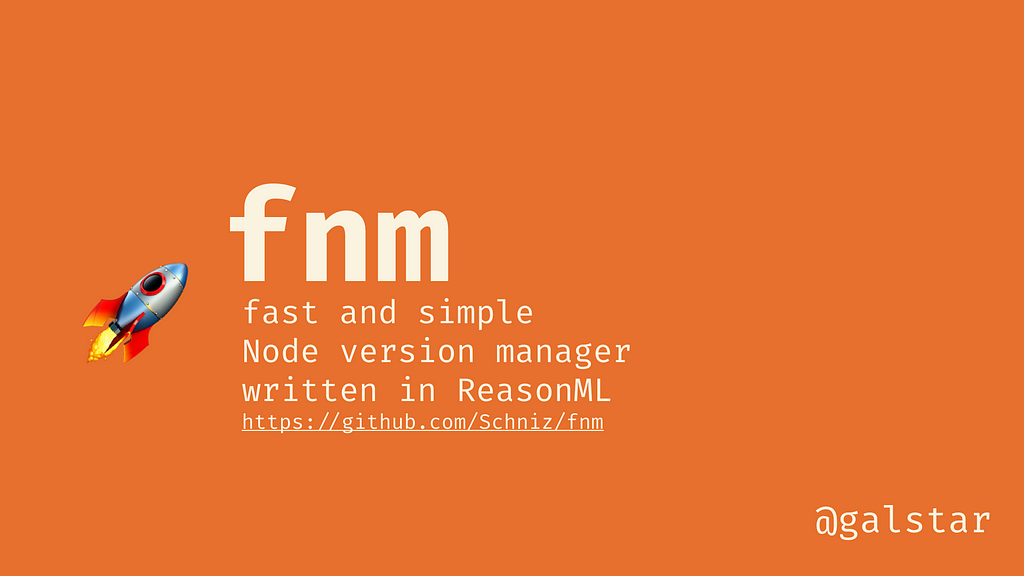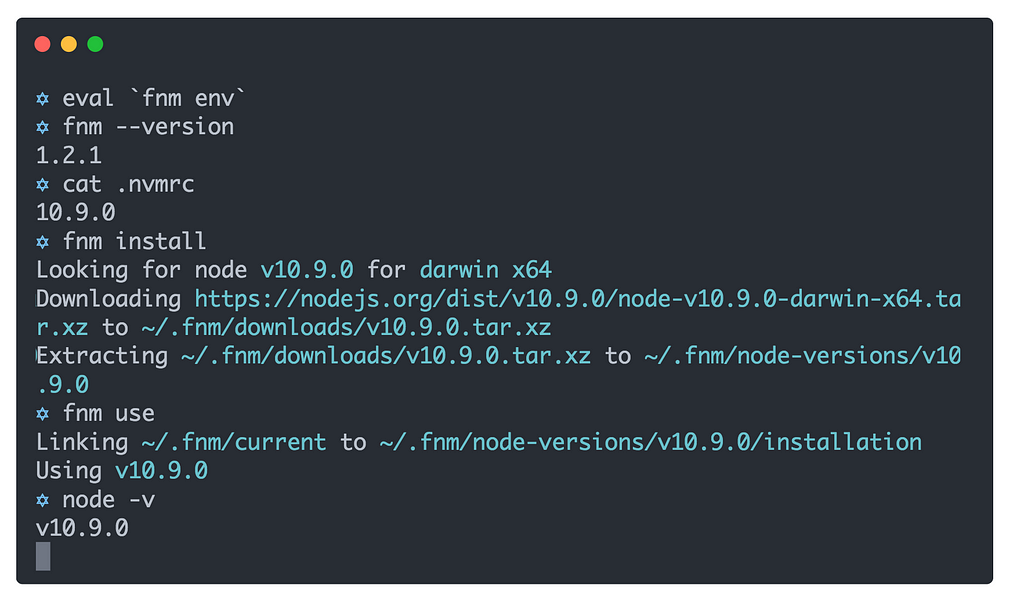Latest news about Bitcoin and all cryptocurrencies. Your daily crypto news habit.
 A super fast alternative to NVM is now open source on GitHub
A super fast alternative to NVM is now open source on GitHub
tl;dr: fnm is a very fast Node.js version manager, ~40x faster than NVM. It supports .nvmrc files and Fish shell out of the box. It works on Linux and Mac and distributed as a single executable - and it is open source on GitHub!
So,
Two weeks ago, I had opened a new tab on my terminal and complained in agony: “Oh dear god! Every time I open a new terminal it takes like one second!”. My teammates looked at me funny. “This is clearly sub-optimal and hurts my focus, and I believe it’s NVM’s fault.”
I found it’s NVM that is at fault after I did a search around my .zshrc file, checking which line takes the most time. It was NVM’s initialization. I have been using NVM for years, and I always wanted to write a simple replacement, because my use cases are pretty simple:
- I want to be able to download any Node version (like nvm install)
- I want to be able to switch between them easily (like nvm use)
These tasks aren’t hard to solve. Node.js binaries are distributed in tarballs on their website, and switching versions shouldn’t be more than just changing a symbolic link around. So, why is NVM so slow?
I thought about writing it as a simple Bash script, just like NVM, but I wanted it to be interesting and fun. Also, not all machines have Bash installed, or there might be problems integrating with Bash. I have used Fish shell for years, and in order to use NVM, I had to use a wrapper that fixes things. It wasn’t easy. Using a real executable, on the other hand, would work on every shell!
The first prototype
My first prototype was a TypeScript app. I packaged it with Zeit’s pkg, making it a self-contained executable, because I didn’t want to have dependency on Node. I wanted it to work on a system without Node installed (so the first version of Node would be installed using fnm!)
Node’s startup time wasn’t good enough for me. Just spawning a “hello world” takes around 200ms, which is good for servers, and for command line utilities that you don’t use frequently, maybe, but some people use nvm on every cd, so their Node version will always be in sync. 200ms penalty for every cdis madness and would make the tool unusable.
So it seems like I need to write it in a language that is compiled (so no dependencies on the host system), and with a fast boot time. Four languages came to mind: Go, Rust, Crystal and Reason/OCaml.
A Native Reason App
I chose Reason for many Reasons (hehe), some of them are written in another post. I had used esy and pesy, two awesome packages that make the development workflow for native Reason/OCaml apps easy-peasy for Node.js developers.
esy works like a super-powered yarn: it installs packages from npm or OPAM (OCaml package manager) and stores it in a global cache. It also manages a sandbox for the OCaml runtime/dependencies for you, so different OCaml installations won’t interrupt each other. pesy generates build configurations for Dune, OCaml’s build tool, right from the package.json file.
When using both packages, it feels just like Node development — everything works with a single package.json file, with minimum configurations. It can also help other Node devs, just like it helped me, to contribute to the project, because Reason syntax is very close to JS’, and the toolchain feels veryJavaScript-ish.
I had built the first prototype, and tested its performance. I had two test files, one using NVM and one using fnm. Both tests spawned a plain Bash, called the “initialization” of the target (NVM/fnm), and then switched to the Node version specified in .nvmrc file in the directory using the target. I ran it 10 times for each binary, and the results were amazing:
- NVM’s test case was around 600ms on my machine
- fnm’s test case was around 15ms on my machine
So in that test, on my MacBook Pro, fnm was 40 times faster than NVM. That’s pretty huge, despite not being very scientific.
 A real-time animated video is on the repo’s README
A real-time animated video is on the repo’s README
Releasing to Public
When I had started working on fnm, I joined the Reason Discord server, and asked some help from people. I found that community is so nice. When I decided to release, I wrote a short message on the #native-development channel and immediately got great feedback, telling me it’s a great idea.
The community aspect is such an important part of JavaScript, and Reason’s community feels even nicer than JS’ — maybe because the community is still small, but it is very welcoming.
I released fnm to GitHub as open source, tweeted about it and went to bed. When I woke up,
- My twitter notifications were on fire 🔥
- The repo had more than 500 stars 💯💯💯💯💯
- fnm was #1 on HackerNews 🏆
- No one on Reddit/HackerNews called me an idiot! 🤡 (a rare sight)
That’s a big deal.
What Now?
fnm has some features still missing. Here are only a few things we want to add:
- Windows support
- Version aliases
- Support downloading latest LTS
- Per-shell usage
- Drop dependency on tar and curl
- … and more!
So if you feel like you’re ready to use it and start working faster, or you’re a JS/Reason developer willing to contribute to an open source project, download fnm and join us on GitHub!
🚀 fnm: Fast and Simple Node.js Version Manager was originally published in Hacker Noon on Medium, where people are continuing the conversation by highlighting and responding to this story.
Disclaimer
The views and opinions expressed in this article are solely those of the authors and do not reflect the views of Bitcoin Insider. Every investment and trading move involves risk - this is especially true for cryptocurrencies given their volatility. We strongly advise our readers to conduct their own research when making a decision.
